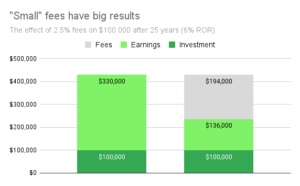First, a message from me, Matt:
I started writing about my experiences as a DIY investor eight years ago in the Canadian MoneySaver magazine. This publication has a 40 year history as an independent, membership-funded magazine without paid advertising or connections with any bank, brokerage or other financial institution. Readers and writers alike were fiercely loyal to the publication because we knew we could trust it. It is no secret that the Canadian MoneySaver, in particular David Stanley’s articles on Beating the TSX, were instrumental in my financial education. Dividend investors were especially fortunate to have such a resource because the man who started the magazine and ran it until 2011 was a dividend investor himself – Dale Ennis.
On behalf of this blog, David Stanley recently reached out to Dale and asked if he would be willing to share his experience with dividend investing. I am so pleased that he agreed. Sometimes it feels like the internet is full of young, enthusiastic, but woefully inexperienced bloggers. Today I am happy to take a back seat. Sit down, grab a hot chocolate and take in a few words from the wise men of dividend investing in Canada.
Here is David Stanley . . .
Hello All, and a Happy Holiday to you and yours. I thought it was odd that even though this year is going to be a ‘pandemic’ holiday I still found myself spending just as much time buying, wrapping, and mailing as in a normal year. This happens to be Christmas Eve and I just finished my preparations. At this point it looks like the TSX might just eke out a small gain for the year. I doubt if many investors thought that would be a possibility after looking at their April 1st portfolio results; just another example of how important it is to think of our investments as a long-term activity. Of course there will be short term gyrations and I doubt if we are finished with the effects of COVID-19 on equity markets yet, but having a longer perspective helps us to ride out the volatility.
The advantages of being a dividend investor
Being a dividend investor makes it easier to stomach market action like we have experienced this year since our focus is on total returns and not just stock price. I thought I might take a look at how dividend investing has progressed in Canada. There was a time, and it wasn’t so long ago, when telecom stocks, utilities, bank stocks, and other high dividend payers were mainly found in ‘widows and orphans’ portfolios, reserved for those investors without the intestinal fortitude to stomach the roller coaster ride of plunging into risky momentum plays.
But see how the worm has turned! De-mystification of the stock market, broader dissemination of investment data, and an increase in computer-savvy investors have all led to a growing awareness that many individuals don’t need expensive ‘expert’ guidance to profit from equity ownership. Academic studies have shown time and time again that a conservative, long-term approach focussed on dividend stocks consistently beats the overall market.
What we can learn from the pioneers of Canadian dividend investing
To my mind, the Canadian pioneers of dividend investing are Dale Ennis and Tom Connolly. Both began sharing their ideas in 1981, Dale through the Canadian MoneySaver and Tom via the Connolly Report. Note that this was a full decade before Michael O’Higgins wrote “Beating The Dow”, that seminal work which provided the average individual investor with a simple method to implement a dividend strategy [the methodology that was adapted to Canada as “Beating the TSX“].
Ennis and Connolly have now influenced several generations of Canadian dividend investors, and yet this simple approach of turning the stock market into a powerful and efficient retirement planning tool remains a dominant methodology in an investment landscape littered with the gutted remains of flash schemes designed more to extract commissions and fees from unwary individuals than to prepare people for a comfortable retirement.
In 1995, the year that I retired, I knew virtually nothing about investments except that I had better educate myself if I expected to have enough money to last me. I wrote Dale with a question and that led to 20 years of writing for the MoneySaver. After Dale and his wife Betty sold the magazine I lost track of them for quite a few years, so I was delighted when Dale reached out to me a few months ago. I asked him if he would share his experience with dividend investing and he was kind enough to do so. Here is his reply:
Dividends Over The Years – by Dale Ennis
This report confirms and briefly explains my long-term principles that I have practised for over 40 years.
I initially started investing in stocks offering DRIPs (Dividend Reinvestment Plans) with SPPs (Share Purchase Plans). The first few shares were acquired or exchanged with other Canadian investors. Later, I added more blue-chip stocks that can be purchased through their direct purchase plans.
One hundred percent of our investable funds purchased these dividend-paying stocks for our portfolios, primarily in non-registered accounts. These low-risk stocks generate dividends that handily beat the impact of inflation. Their steady capital growth and annual dividend yields of 3-6% are quite rewarding. Coupled with personal management, costs are minimal.
As our investment acumen improved, we realized a professional advisor would increase our expenses unnecessarily. There are an abundance of commendable sources which offer complimentary investment information.
A few dozen Canadian stocks qualify for this strategy. We built our portfolios with under 20 dividend-paying stocks in various sectors, such as Bank of Montreal, RBC, Emera, Fortis, Telus and BCE. Today our portfolios consist of fewer than 10 stocks.
Active trading is not warranted for the patient investor. Familiarity with your choices increases your ability to decide if you need to trade. However, unexpected adjustments are required, for example if there is a dividend decrease.
Some of my stock considerations include: trends, dividend yield, payout ratios (cash and dividends), minimum of ten years’ dividend growth, diversified companies with a high cost for memberships, and other personal preferences.
Ownership includes calculating the tax consequences before investing.
I search for the best companies with a significant foreign component to satisfy our diversification purposes. Although we only purchase Canadian stocks, dividend income and capital gains have steadily increased throughout our retirement years.
I have never been a registered investment adviser. Through my writing and speaking engagements I limited my “advice” to my personal experiences. By sharing with other like-minded investors we all benefit. This sharing goal was the principal reason for launching Canadian MoneySaver in 1981.
Dale Ennis
Thanks Dale! It is great to hear from you again and I know your experience will resonate with Canadian individual investors today. -Dave Stanley
If you’re interested in the long term performance of our preferred dividend investing strategy, Beating the TSX, click HERE.





Great to hear from the Canadian Money Teachers! Thanks Matt for carrying the torch. Best wishes for a HEALTHY, happy and prosperous new year.
Thanks – here’s to a happier and healthier 2021
There is nothing quite like dividend investing. I “found” out about it many years ago and started quite aggressively around the year 2004. I have followed Mr. Stanley and Mr. Ennis through the moneysaver magazine as well as now Matt. I hold about 20 stocks and have increasing reliable income every year. I buy when there are serious dips, march / april 2020, and continually add to the portfolio.
Thanks for your dividend strategy blog, it’s a good one!
Merry Christmas to you and your family and let’s hope that 2021 is MUCH different from 2020!
“There is nothing quite like dividend investing” – that’s for sure. It’s a wonder more people haven’t caught on. Let’s hope a few more of them find this little blog in 2021.
Thanks for the kind words.
Matt, I just came across your website and found it very interesting. I am seriously looking at adopting your approach, but also wondered if you know of an ETF that follows your formula? It would be nice to just purchase one EFT with your top 10 TSX60 selection, but I have been unsuccessful in finding one.
There is no BTSX ETF that I am aware of, probably because it is so darn easy to just do it yourself – and no additional fees to pay.
Dale: “We built our portfolios with under 20 dividend-paying stocks in various sectors… Today our portfolios consist of fewer than 10 stocks”.
Very few recognize the importance or that it’s even possible to safely generate sufficient income from a concentrated portfolio of quality DG stocks. Today’s catch word is Diversification, and owning the market or Index. I find it difficult to believe that so few have learned the lessons taught by yourself and Tom.